The night sky has long been a canvas of wonder and mystery, but for many bird species, it serves as something far more practical: a navigational tool essential for their migratory journeys. While stars and the sun provide crucial directional information, the moon plays a surprisingly significant role in how birds traverse thousands of miles each year. Moonlight illuminates landscapes, affects bird behavior, and can dramatically influence migration patterns across species. The relationship between avian travelers and Earth’s natural satellite represents one of the most fascinating intersections of celestial mechanics and animal behavior in the natural world. From creating favorable conditions for night flights to potentially disrupting internal compasses, the moon’s influence on bird migration remains an area where ornithology meets astronomy in unexpected ways.
The Evolutionary Advantage of Night Migration
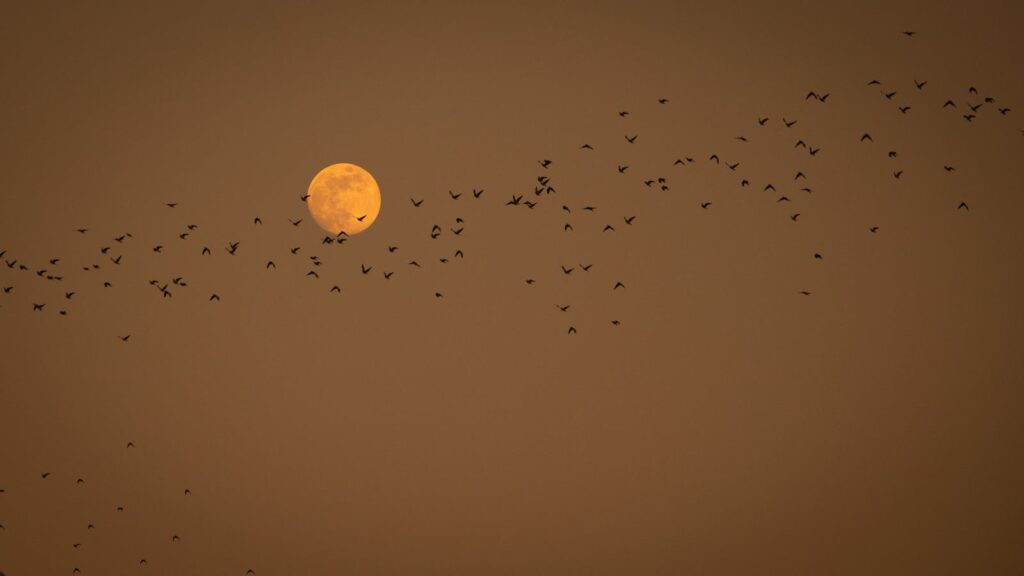
Birds have evolved to migrate predominantly at night for several compelling reasons that increase their chances of survival. Nighttime offers cooler temperatures, reducing the risk of overheating during the physically demanding journey. The darkness protects birds from diurnal predators that would otherwise target birds during daylight hours. Atmospheric conditions typically become more stable after sunset, with calmer winds and less turbulence, creating more predictable flying conditions. The moon, particularly when full or near-full, provides crucial illumination that helps birds navigate terrain features and maintain visual contact with landmarks without the full exposure that daylight would bring. This evolutionary adaptation allows migratory species to maximize travel efficiency while minimizing predation risk.
Moonlight as a Navigational Aid
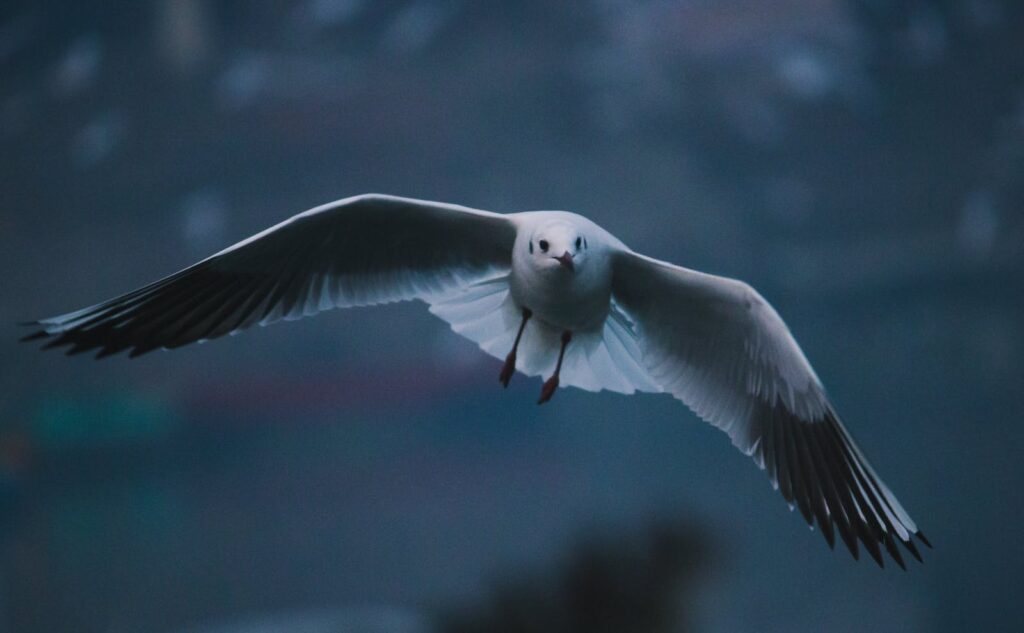
Moonlight serves as a natural beacon for migratory birds, particularly during clear nights when its brightness can illuminate landscape features below. Birds utilize these illuminated landmarks—rivers, mountain ranges, coastlines—as reference points to maintain their course. Studies have shown that some species adjust their flight altitude based on moon visibility, flying higher when moonlight allows them to orient visually from greater heights. The moon’s position in the sky may also serve as a direct reference point, similar to how stars function in celestial navigation. Researchers have observed that some birds seem to calibrate their internal compass using the moon’s azimuth, particularly during the critical early stages of their migratory journey.
The Lunar Cycle’s Impact on Migration Timing
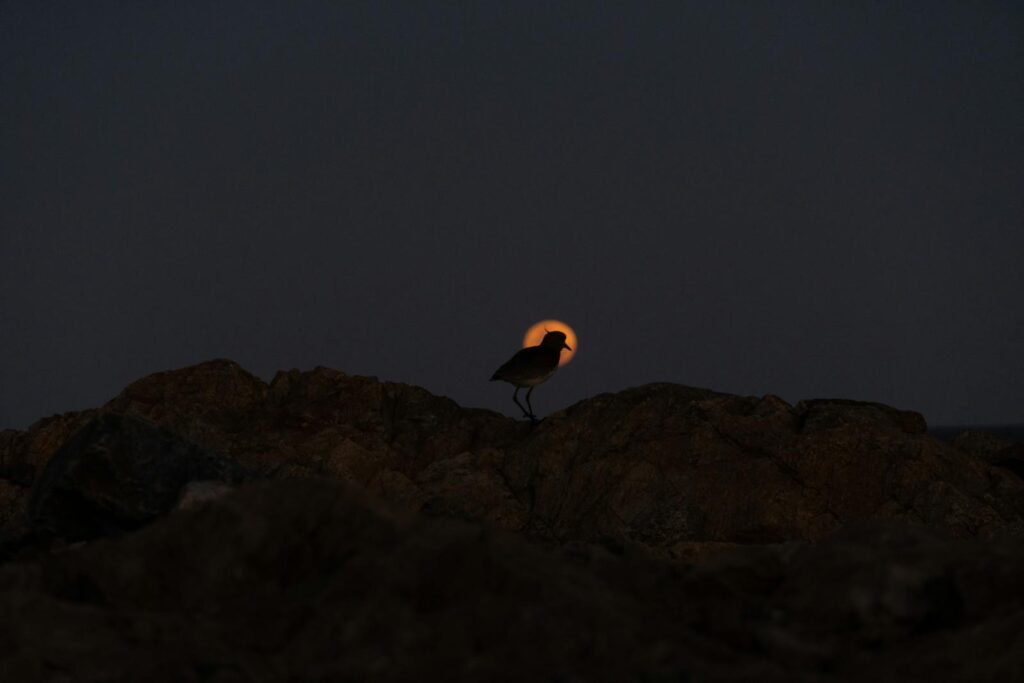
Bird migration patterns often correlate with the lunar cycle, with many species timing their departures to coincide with favorable moon phases. Peak migration activity frequently occurs during periods around the full moon when maximum illumination provides optimal visibility for nighttime navigation. Studies tracking radar signatures of migratory flocks have documented significantly higher numbers of birds in flight during bright moonlit nights compared to darker periods. This synchronization with lunar cycles suggests an evolutionary adaptation that maximizes survival by ensuring birds travel when visual navigation conditions are optimal. Some species appear to delay migration if the moon is new or heavily obscured, demonstrating the importance of lunar illumination in migration decision-making.
Moonlight and Flight Altitude
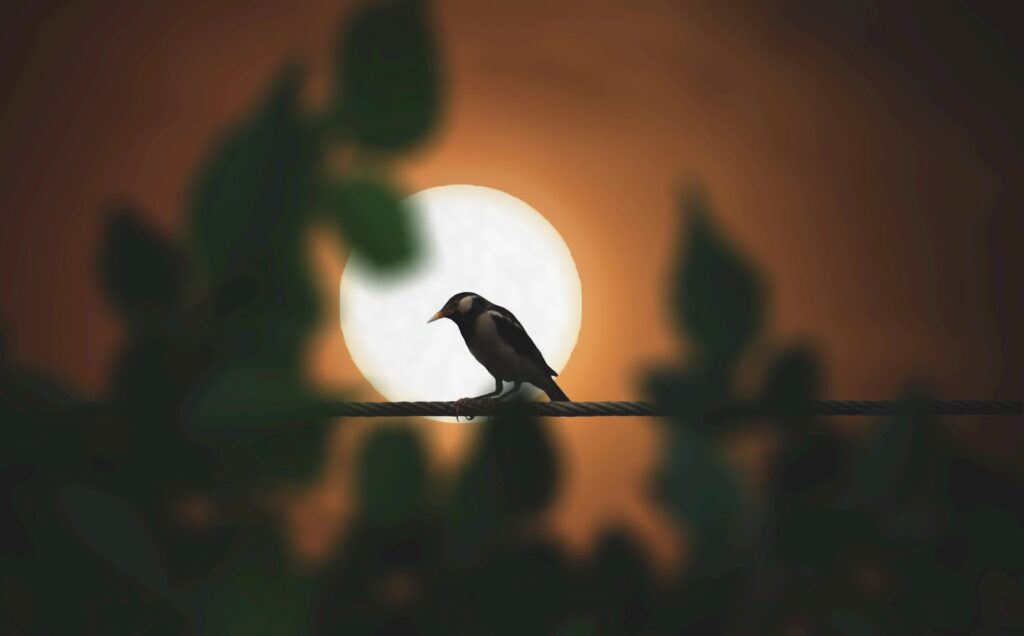
The moon’s illumination directly influences the altitude at which birds choose to migrate. During nights with bright moonlight, many species fly at higher altitudes where they can better maintain visual contact with geographical features while benefiting from more stable air currents. Radar tracking has revealed that some birds may fly up to 1,000 feet higher during full moon periods compared to new moon nights. This altitude adjustment serves multiple purposes: it helps birds avoid obstacles, reduces predation risk, and allows them to access more favorable winds at different atmospheric layers. When moonlight is limited, birds typically fly lower where even minimal illumination can help them detect terrain features, though this comes with increased collision risks and energy expenditure navigating variable air currents.
Disruption from Artificial Light Pollution
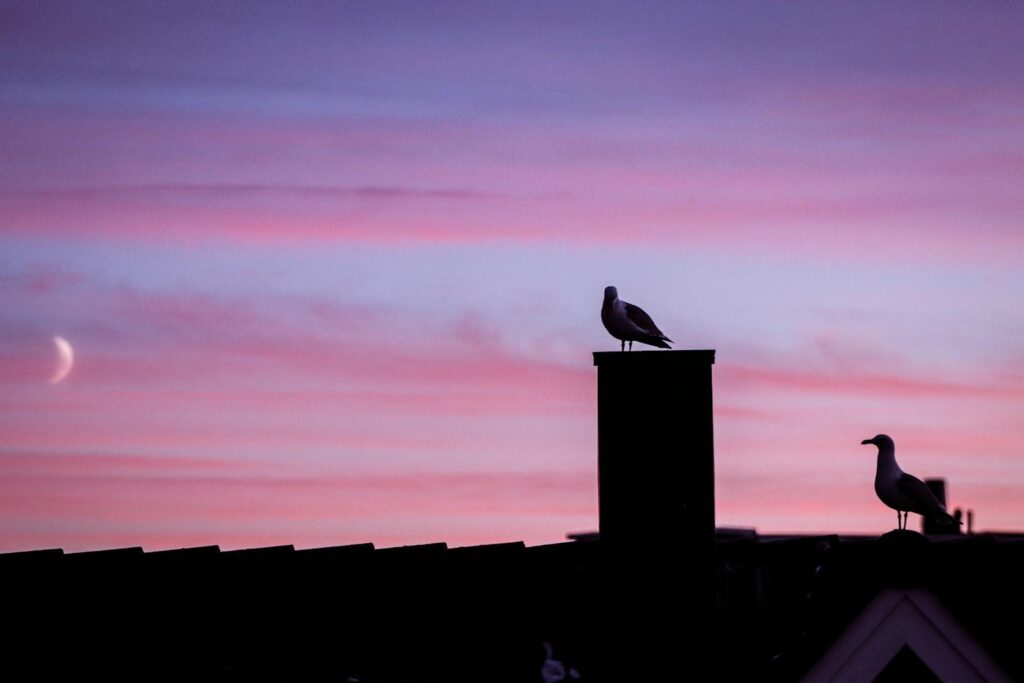
The natural relationship between moonlight and bird migration faces significant disruption from artificial light pollution in the modern world. Urban sky glow can obscure moonlight and stars, compromising the celestial navigation systems birds have evolved to rely upon. Birds migrating over illuminated cities often become disoriented, circling bright structures or flying off-course, depleting crucial energy reserves needed for their journey. Light pollution can also override or confuse the subtle cues birds take from moonlight, essentially creating a false navigational environment. Studies have documented mass mortality events where thousands of migrating birds became disoriented by artificial lights during cloudy nights when moonlight would normally be their primary visual reference, highlighting the critical balance between natural lunar illumination and human-generated light.
Moonlight-Dependent Species
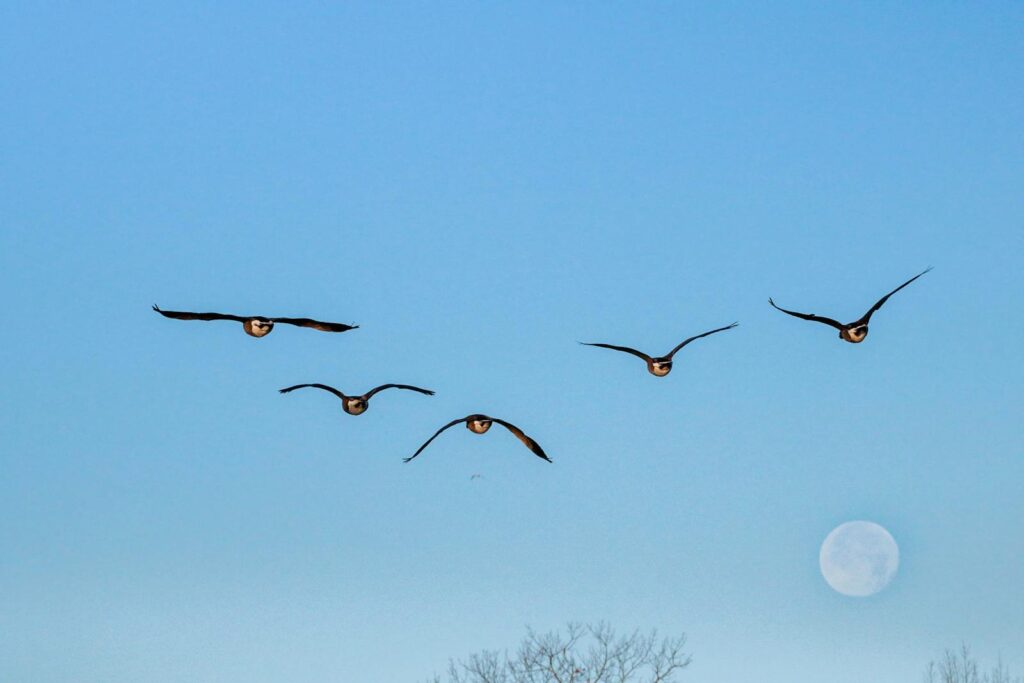
Some bird species exhibit particularly strong dependencies on moonlight for successful migration. The European Nightjar demonstrates clear lunar synchronization, with migration activity increasing significantly during the brightest phases of the moon. Shorebirds like sandpipers and plovers time their long-distance flights to coincide with full moons, using the illuminated tidal flats as critical refueling areas during stopovers. Seabirds, including petrels and shearwaters, rely heavily on moonlight to navigate open ocean stretches where landmarks are nonexistent. For these species, a full moon can mean the difference between successful navigation and becoming dangerously disoriented over featureless water. Their highly developed night vision allows them to maximize the benefits of even minimal lunar illumination.
The Moon’s Role During Poor Weather Conditions
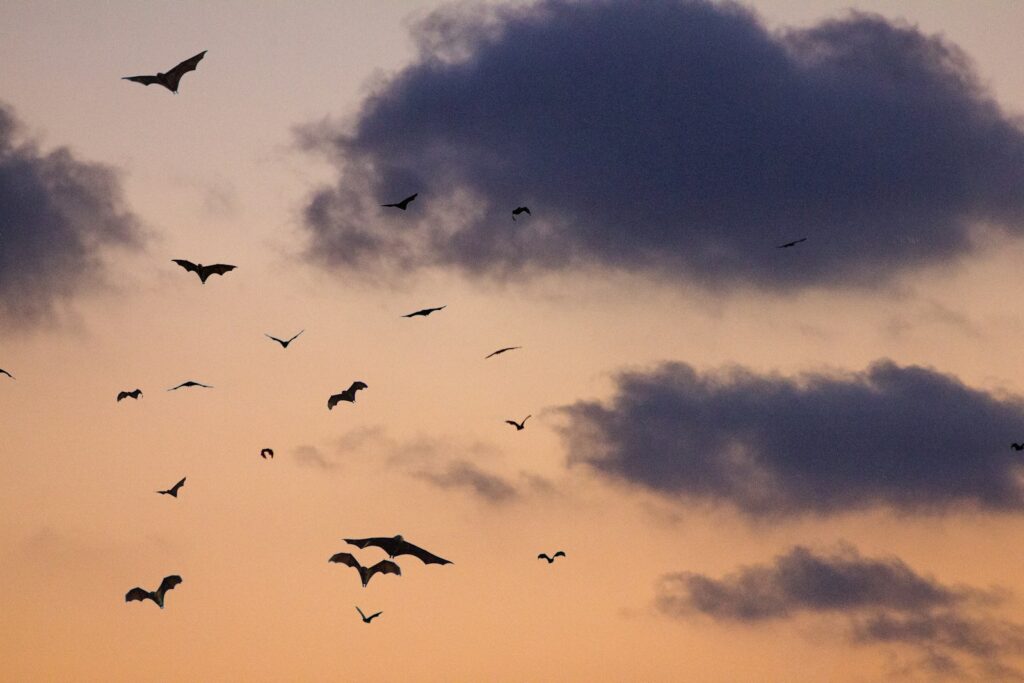
The moon becomes particularly crucial for migrating birds during challenging weather conditions that might otherwise ground them. When patchy cloud cover would normally make navigation difficult, bright moonlight penetrating through breaks in the clouds can provide intermittent navigational references that allow migration to continue safely. During light precipitation, moonlight reflecting off raindrops can enhance visibility in some circumstances, allowing birds to maintain their course. Birds have been observed using moonlight to navigate around storm systems rather than through them, following the illuminated edges of weather fronts. Research tracking migrations during variable weather conditions suggests that strong moonlight can partially compensate for other navigational challenges, giving birds more flexibility in when they can safely travel.
Lunar Magnetism and Bird Orientation
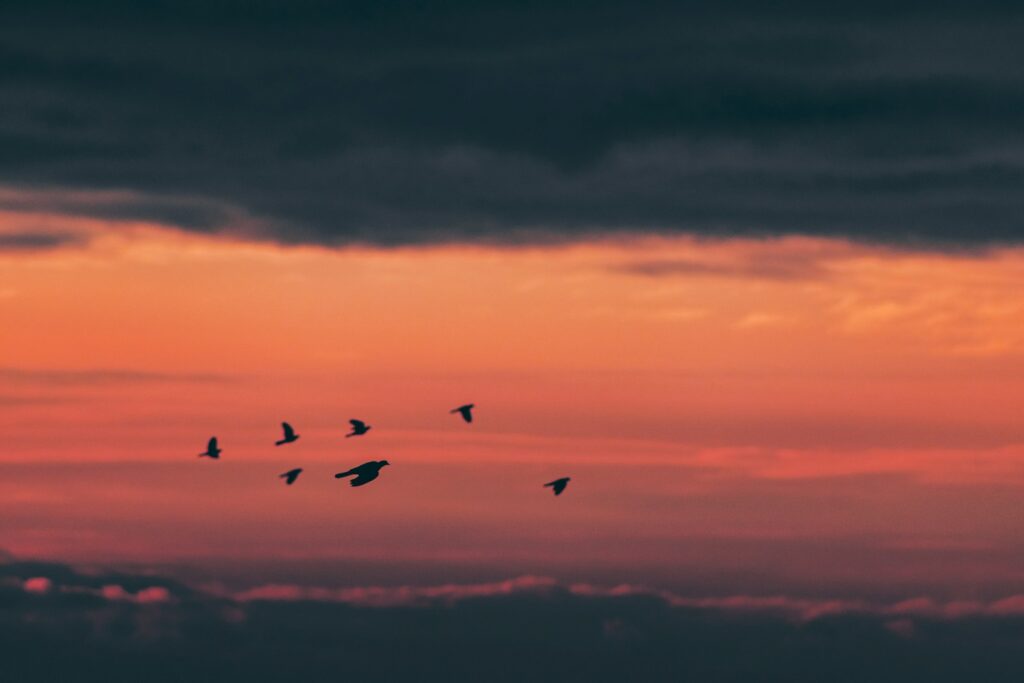
Beyond simple illumination, emerging research suggests the moon may influence bird migration through its effects on Earth’s magnetic field. The moon’s gravitational pull causes subtle fluctuations in the geomagnetic field that sensitive birds might detect through specialized magnetoreception organs. Some migratory species appear to recalibrate their internal magnetic compass during moonlit nights, possibly using visual cues from the moon to confirm magnetic readings. This dual-reference system would provide birds with redundant navigational information, making their journeys more resilient to environmental variations. Experimental studies where birds were exposed to artificial magnetic fields showed less disorientation when tests were conducted under moonlight conditions compared to complete darkness, suggesting lunar visibility helps birds maintain accurate orientation even when magnetic cues are compromised.
Lunar Eclipses and Migration Disruption
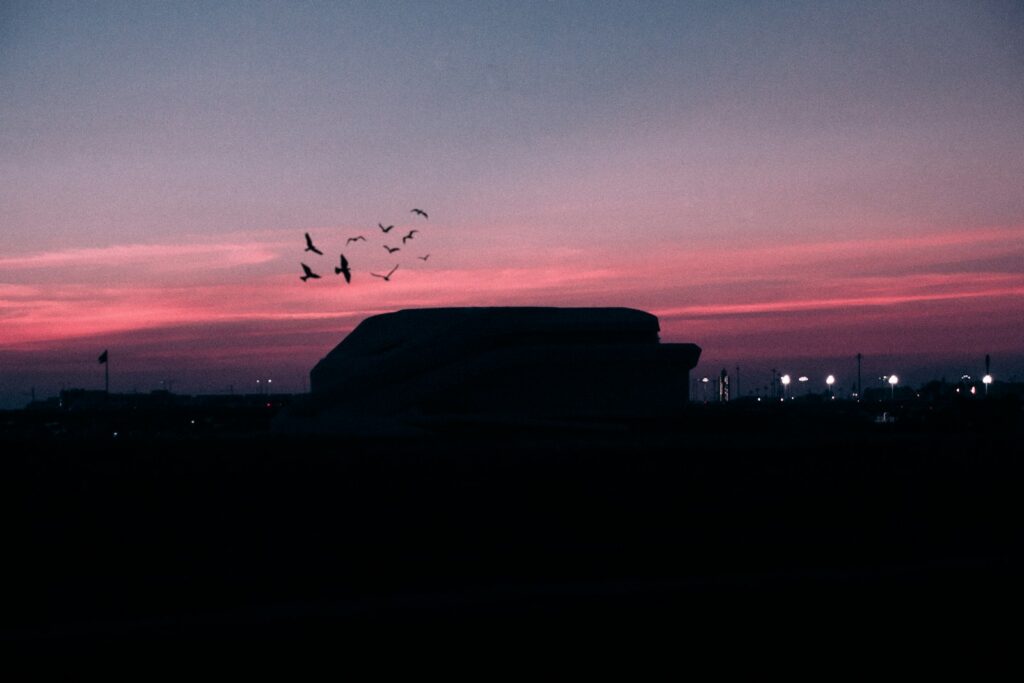
Lunar eclipses present a fascinating natural experiment in how birds respond to sudden changes in moonlight availability. During total lunar eclipses, when the moon darkens dramatically over a few hours, radar tracking has revealed noticeable disruptions in migratory patterns. Birds already in flight during an eclipse often show signs of disorientation, including circling behaviors, decreased flight speed, and altitude changes as they adapt to the reduced visibility. Some species have been observed making emergency landings during eclipses, particularly those occurring at peak migration times. After the eclipse passes and lunar illumination returns, migration activity typically surges as birds resume interrupted journeys. These natural events highlight just how quickly birds can respond to changes in lunar illumination and how dependent certain species are on moonlight for successful navigation.
Moonlight and Stopover Decisions
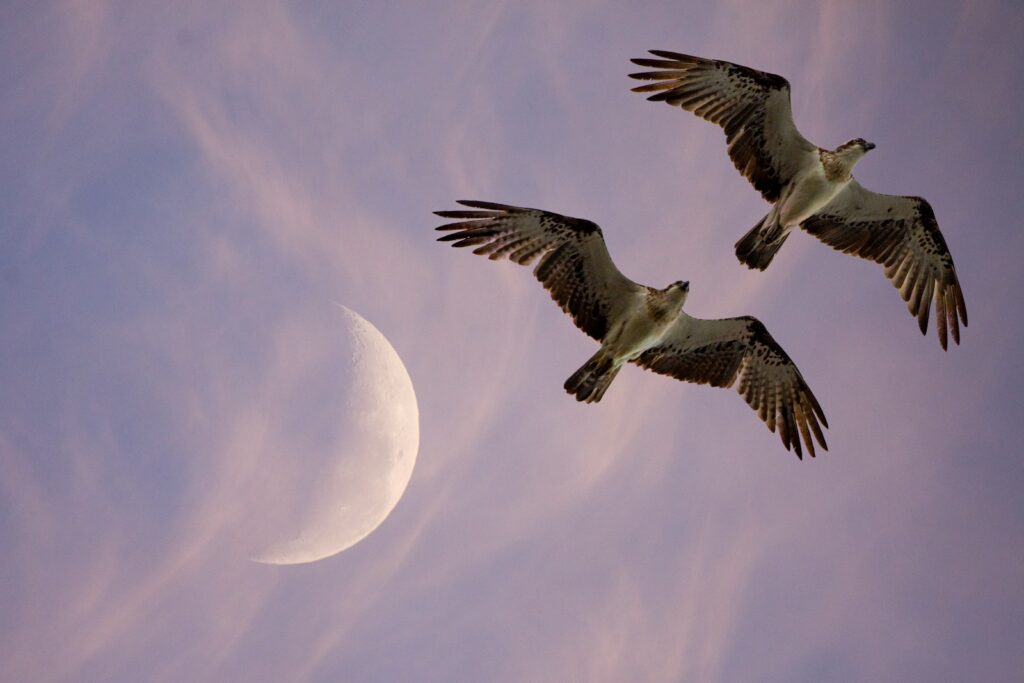
The moon’s phases influence not just when birds fly but also when and where they choose to rest during migration. Bright moonlight allows birds to better assess potential stopover habitat qualities, including food availability and predator presence, even at night. Research tracking stopover decisions shows that many species prefer to arrive at rest locations during moonlit periods when they can immediately begin foraging instead of waiting until dawn. For species that feed at night, like many shorebirds, stopover locations with good moonlight exposure are particularly valuable as they allow for round-the-clock refueling. Birds have been documented extending their stay at high-quality stopover sites when moon phases are unfavorable for continued migration, demonstrating sophisticated cost-benefit calculations based partially on lunar conditions.
Moonlight’s Influence on Migration Energy Expenditure

The presence or absence of moonlight significantly impacts the energy economics of bird migration. Flying under bright moonlight conditions allows birds to navigate more efficiently with fewer course corrections, reducing the total distance traveled and conserving precious energy stores. Birds can maintain optimal flight speeds and patterns when visibility is good, rather than slowing down to process limited visual information. Research using accelerometers attached to migrating birds shows lower heart rates and wing beat frequencies during full moon conditions compared to new moon flights at similar distances. These energy savings can be critical for long-distance migrants that operate near their physiological limits, potentially determining whether they can complete their journey with existing fat reserves or require additional refueling stops.
Cultural and Historical Observations of Moon-Bird Relationships
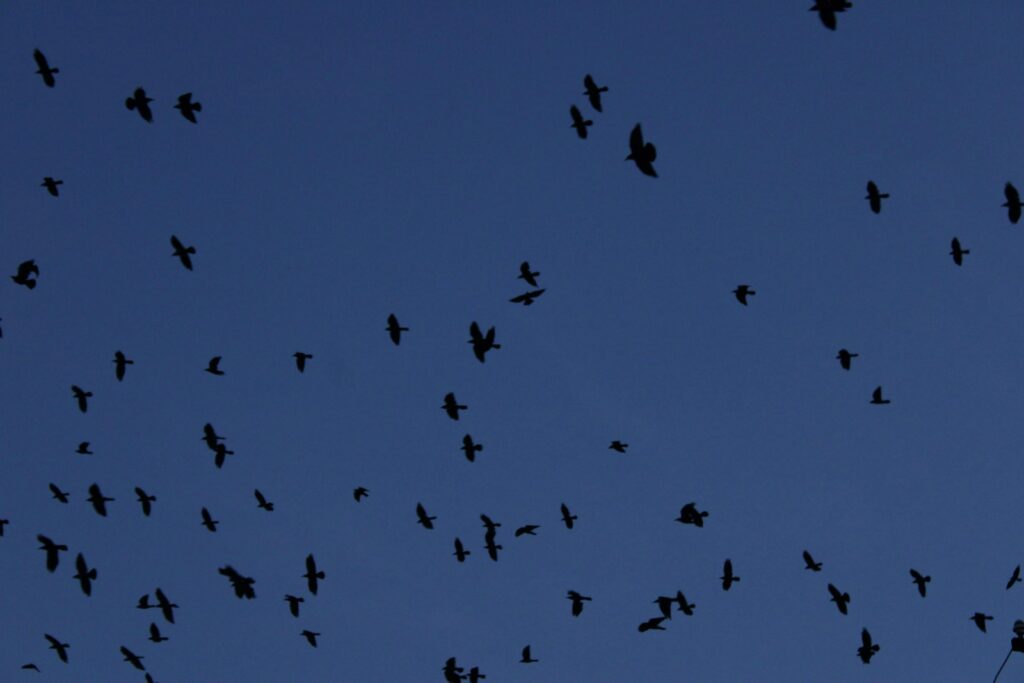
The connection between moonlight and bird migration has been observed by human cultures long before scientific study formalized this relationship. Indigenous knowledge systems across multiple continents contain references to “moon birds” that appear and disappear with lunar cycles, demonstrating ancient awareness of these patterns. European folklore from the Middle Ages noted the “moon paths” that certain birds seemed to follow during their seasonal movements. Early naturalists in the 18th and 19th centuries recorded correlations between moon phases and the abundance of migratory species, establishing observational data still referenced in modern ornithology. These cultural observations often preceded scientific confirmation by centuries, highlighting the visibility and significance of lunar effects on bird behavior across human history.
Modern Tracking Technologies Revealing Lunar Patterns
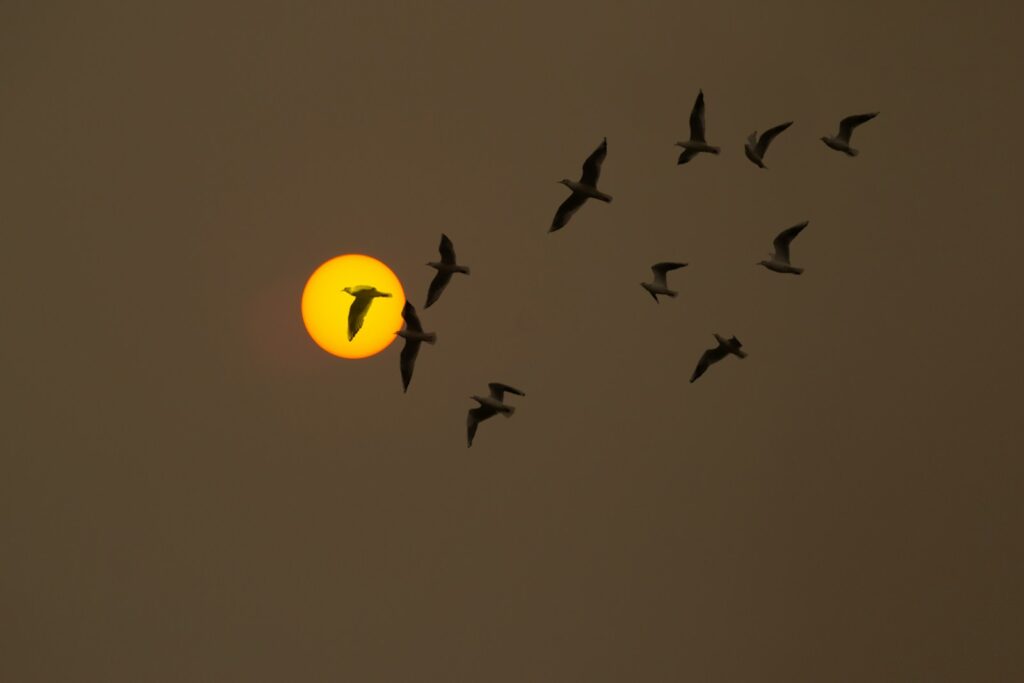
Advanced tracking technologies have revolutionized our understanding of how moonlight influences bird migration at unprecedented scales. Lightweight GPS transmitters now allow researchers to follow individual birds throughout their migratory journeys, revealing precise correlations between movement patterns and lunar phases. Weather surveillance radar systems can detect millions of migrating birds simultaneously, showing clear spikes in migration intensity that align with favorable moon conditions. Acoustic monitoring stations that record night flight calls demonstrate higher vocal activity during moonlit periods, suggesting social coordination mechanisms may also be enhanced by lunar visibility. These technologies have transformed what was once anecdotal evidence into quantifiable data, confirming that moonlight effects on migration are significant, widespread, and consistent across many species and geographical regions.
Conservation Implications of Lunar-Influenced Migration
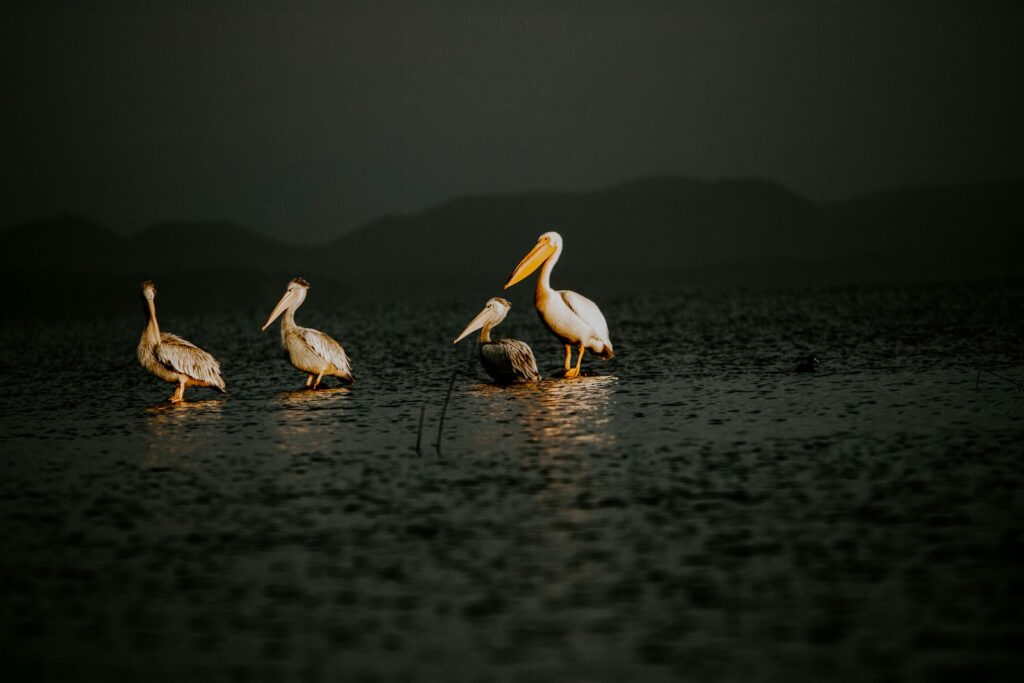
Understanding the relationship between moonlight and bird migration has important implications for conservation efforts worldwide. Protected area designs now increasingly consider moon exposure for stopover habitats, ensuring these critical refueling stations maintain natural light conditions during migration seasons. Light pollution mitigation efforts prioritize areas along major flyways, particularly during peak migration months coinciding with key moon phases. Offshore wind farms and other aerial obstacles are being programmed with lunar-aware operational schedules, reducing turbine speeds during high-migration moonlit nights when birds are most likely to be passing through at turbine height. Climate change models examining how shifting weather patterns might interact with lunar cycles help predict how migration timing might evolve, allowing conservation strategies to adapt accordingly. By recognizing the moon’s role in successful migration, conservation biologists can better protect these ancient avian journeys in an increasingly human-modified world.
The moon’s silent influence on bird migration represents one of nature’s most elegant systems—a celestial body guiding earthbound creatures across continents and oceans. From providing essential illumination for navigation to influencing the timing and energy efficiency of these remarkable journeys, moonlight serves as a critical environmental cue in the complex decision-making process of migratory birds. As we continue to unravel the intricate relationships between lunar cycles and avian behavior, we gain not only scientific understanding but also a deeper appreciation for the interconnectedness of Earth and sky. In a world where artificial light increasingly competes with natural illumination, preserving dark skies becomes not merely an astronomical concern but an ecological imperative critical to maintaining the ancient rhythms that guide birds on their remarkable global journeys.
